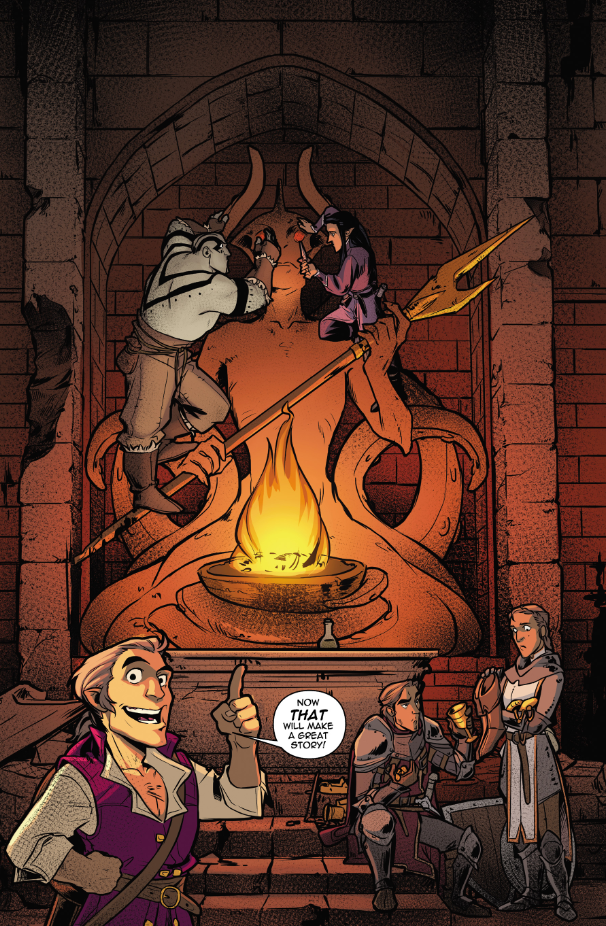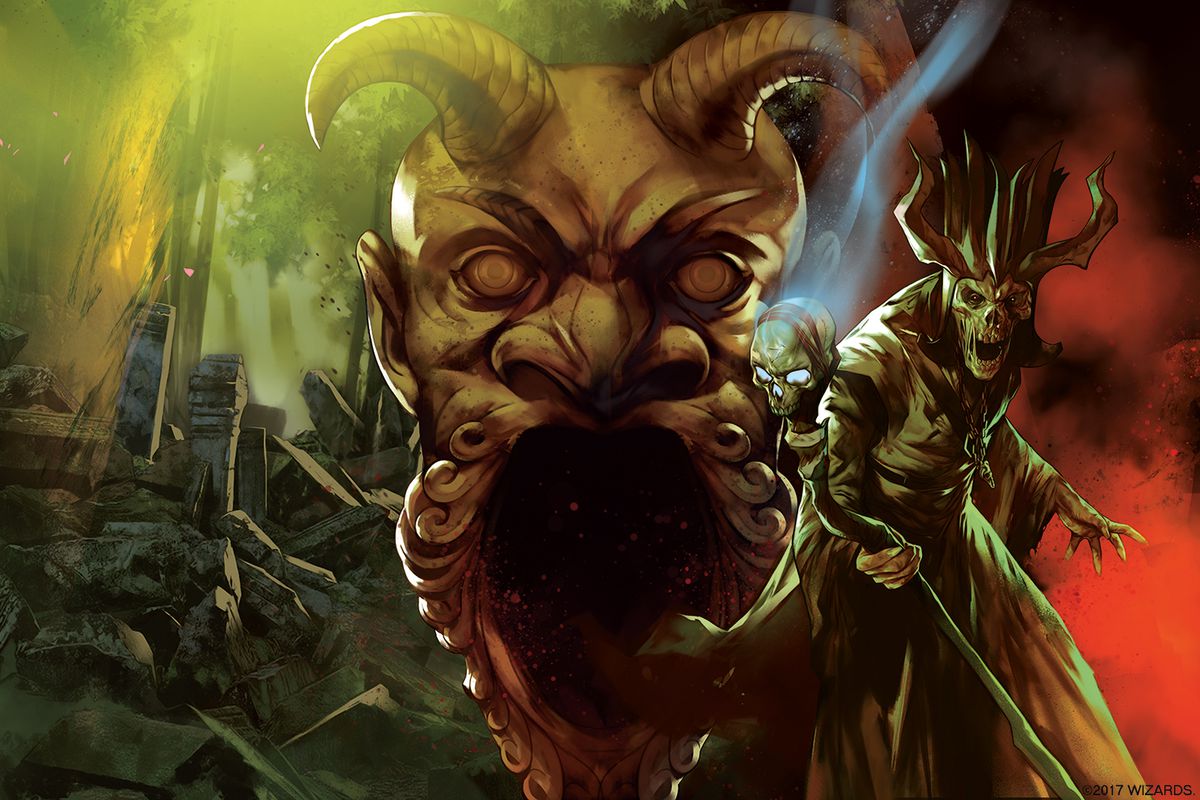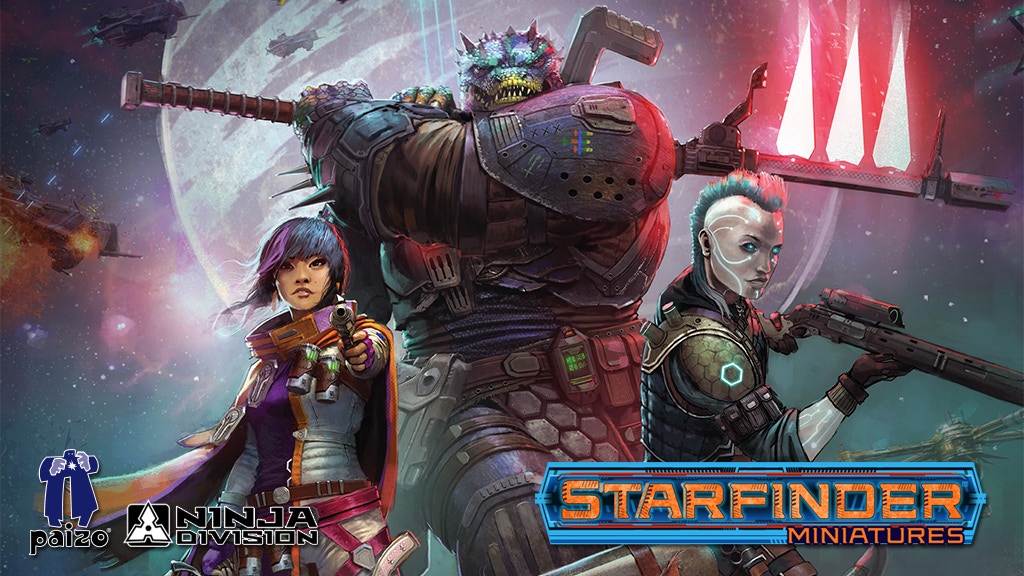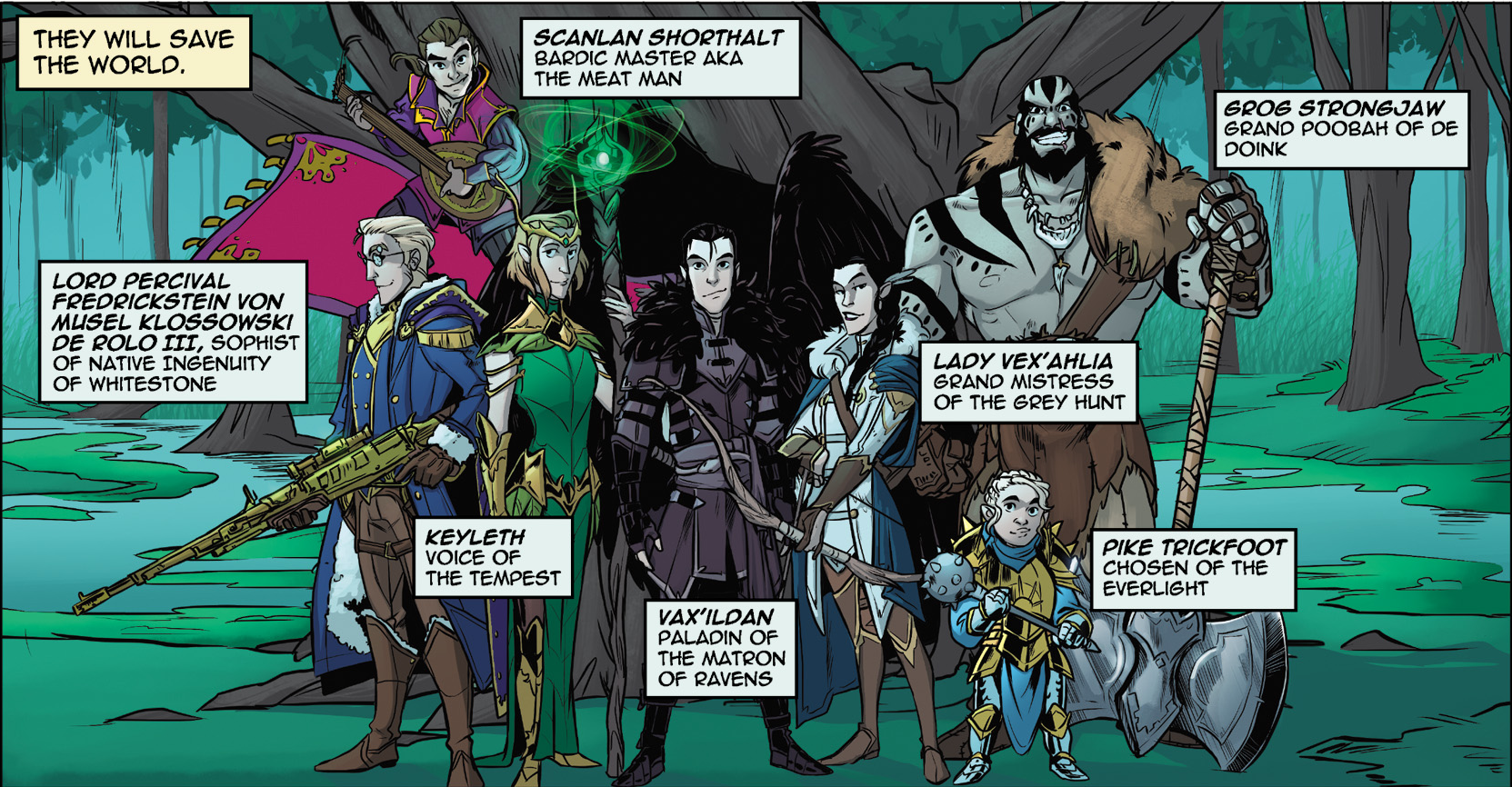There’s a lot of plot threads sort of converging in this scene. Usually when that happens not everyone survives.
Why write reviews when you can just quote Scanlan?
So, the third volume came out today, and though I have next to no time whatsoever for writing a blog lately (toy business is kind of hectic before Christmas), I couldn’t skip this one. Writen, as before, by the illustrious Matt Colville, the third issue takes on the incredibly heavy duty of bringing all of the characters together. As might have been expected – with paranoid twins, prone to anger Grog and generally detached Scanlan – this does not go smoothly.
Ab ovo, though. Drawn by Olivia Samson and coloured by Chris Northrop, this is still one of the prettiest things I’m reading these days. But what stood out even more this time for me is the amazing work of Chris Kawagiwa, who was expertly handling the layouts. I do not know who decided to use the grid to show the placement of the character (especially those behind the secret doors), but it’s genius.

The beginning of the story covers the poisoned swamp plot from the third side, as Keyleth and Tiberius (plus their party) are working for the Clasp to uncover the reasons why the mob is losing their profits. Which doesn’t actually go exactly as one might anticipated. Anyway, the Clasp is evil (in case somebody thinks that thieves’ guilds are full of bleeding-heart Robin Hoods), shaking down your employer may not be the best idea, and the race goes to the most motivated. I can’t wait to see how it goes in the next issue.
To not spoil to much, we cut to bickering twins in the sewers, amazing idea of disguising ourselves as ourselves, but poorer, Kiki rolling well on Perception (Keen Senses), Tiberius having the most amazing conversation with a dog, and Scanlan being an incredible bard.
The amount of puns, jokes, and splendid interpretations of usefulness of a bard in a fight (oh, boy. I need more of this), make this comic book worth every minute spent on reading and re-reading. The plot brings together all of the characters (minus Pike and Percy, which is a still a disappointment), playing off various strengths and weaknesses, and finally introducing the villain to the PCs.
In short, I’m seriously impressed. Third issue is great, even if slightly darker than the previous ones (although the series started with an infant sacrifice…). I thought it might be just sentiment for the Critical Role, but then it became apparent it’s just a quality piece of entertainment.
Let me just finish off with this golden piece of Scanlan:





















 Well, theoretically there’s also an app for that (kind of), but first, let me tell you about this amazing book I’ve got. It’s called How to Draw Fantasy Art & RPG Maps by Jared Blando (published in 2015 by Impact Books), and its contents are pretty much what the cover says. As the publisher was so nice as to supply us with trailer for the book, take a look:
Well, theoretically there’s also an app for that (kind of), but first, let me tell you about this amazing book I’ve got. It’s called How to Draw Fantasy Art & RPG Maps by Jared Blando (published in 2015 by Impact Books), and its contents are pretty much what the cover says. As the publisher was so nice as to supply us with trailer for the book, take a look:
